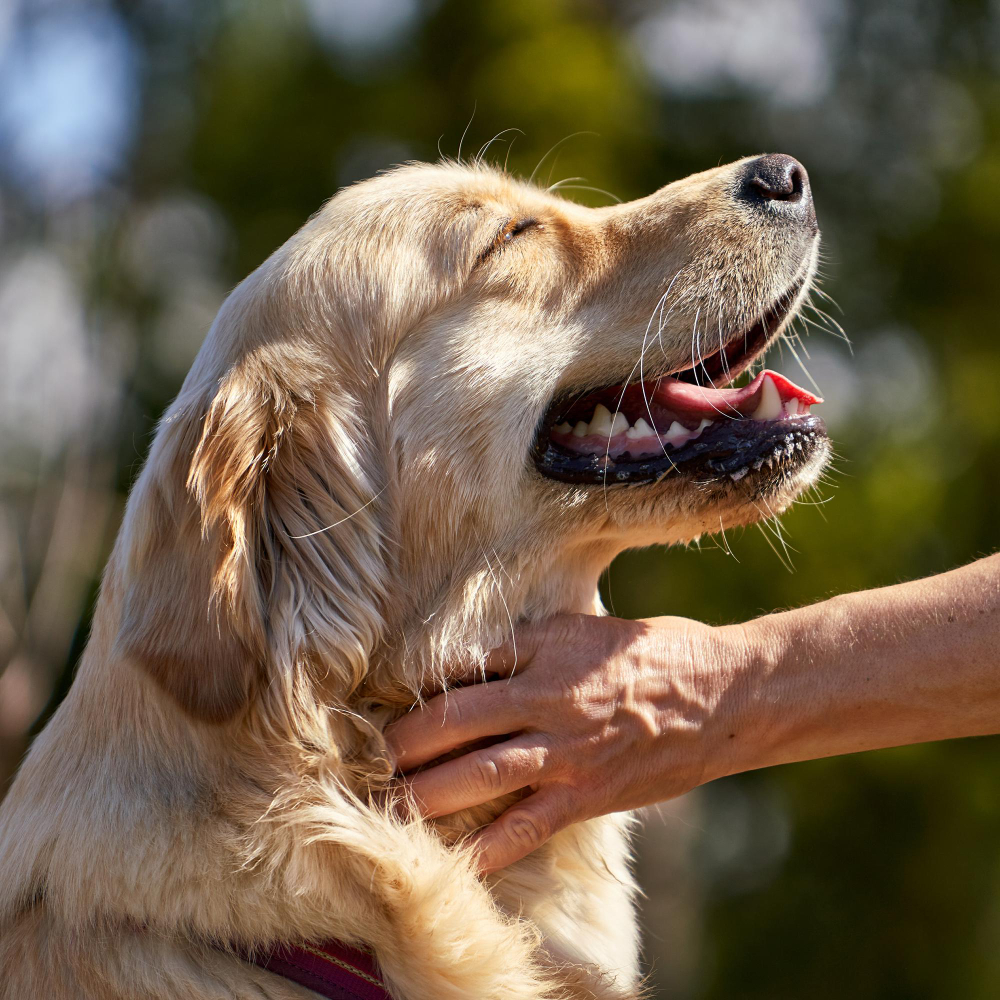LABRADOR RETRIEVER PUPPIES AND DOGS
FAST FACTS
- Nickname: Lab
- Breed Group: Retriever
- Height: 22-24 inches
- Weight: 55-80 lbs
- Life Span: 10-14 years
LABRADOR RETRIEVER INFORMATION
LABRADOR RETRIEVER BASICS
WHERE ARE LABRADOR RETRIEVERS FROM?
Contrary to its namesake, the Labrador Retriever originated in Newfoundland and was first discovered there in the 1500s. Labrador Retrievers are said to have been transported to Canada by either Norse explorers or Portuguese and Basque fishermen. We know they are related to St. John water dogs (hence their natural and genuine love of the water). They were imported to England by estate owners in the 1700s, and the third Earl of Malmesbury immediately assigned them the name “Labradors.”
HOW MANY TYPES OF LABRADOR RETRIEVERS ARE THERE?
There are two subgroups of Labrador Retrievers: American Labs and English Labs. American Labs are more spirited and more suited for professional usage, whilst English Labs are said to be more trainable and better as companions.
WHICH BREEDS MIX WITH LABRADOR RETRIEVERS?
- Labradoodle (Labrador + Poodle)
- Bassador (Basset Hound + Labrador)
- Afador (Afghan Hound + Labrador)
LABRADOR RETRIEVER LIFESPAN
Labrador Retrievers live about 10-14 years.
LABRADOR RETRIEVER SIZE (HEIGHT & WEIGHT)
Most Labrador Retrievers weigh between 50 and 80 lbs. and measure between 22 and 24 inches tall.
LABRADOR RETRIEVER APPEARANCE
WHAT COLORS DO LABRADOR RETRIEVERS COME IN?
Black, yellow, and chocolate are the coat colours for Labrador Retrievers (called “liver”).
HOW MUCH DO LABRADOR RETRIEVERS SHED?
Labrador Retrievers shed all year round, but it’s normal for a dog with a thick coat and may be relieved with regular brushing.
DO YOU NEED TO GROOM A LABRADOR RETRIEVER?
Labrador Retrievers don’t need a rigorous grooming regimen. But, like any dogs, they require regular brushing and the occasional wash to minimize shedding.

LABRADOR RETRIEVER TEMPERAMENT, PERSONALITY & TRAINING
HOW MUCH DO LABRADOR RETRIEVERS BARK?
Labrador Retrievers occasionally bark at loud noises but are not inherently noisy or territorial. On the contrary, they are naturally obedient, so with the proper training and exercise, you can stop them from barking.
ARE LABRADOR RETRIEVERS GOOD WITH KIDS?
Labrador Retrievers are an excellent choice for a family pet if you have small children. They can tolerate any accidental youthful hostility with a charming good-naturedness ingrained in the breed.
For the safety of both the child and the dog, it is advised that an adult handle your Labrador Retriever at all times.
ARE LABRADOR RETRIEVERS GOOD FAMILY DOGS?
For generations, Labrador Retrievers have earned a reputation as one of the most cherished family pets, and for a good reason. They are happy, outgoing animals, people, and water lovers who are all delighted to be around.
ARE LABRADOR RETRIEVERS GOOD WITH CATS?
Despite their playful nature and the potential need to chase the cat, labradors do not have a significant prey drive. As a result, Labrador Retrievers often get along nicely with other animals. Of course, each dog has unique preferences and temperament, but you can be reasonably sure that your Lab and your cat should get along well if they are adequately socialized or introduced when they are young.
ARE LABRADOR RETRIEVERS EASY TO TRAIN?
Due to their exceptional intellect, prodigious patience, excellent ability to connect, and generous spirits, Labrador Retrievers are among the simplest dogs to teach. A Labrador Retriever may be the cartoon dog you were looking for to bring you your slippers in the morning because they also enjoy carrying things in their mouths.
LABRADOR RETRIEVER HEALTH
DO LABRADOR RETRIEVERS HAVE A LOT OF HEALTH PROBLEMS?
Compared to other dog breeds, Labrador Retrievers have a muscular build and are susceptible to very few serious health issues.
WHAT DISEASES ARE LABRADOR RETRIEVERS PRONE TO?
- Hip or Elbow Dysplasia: Hip and elbow dysplasia are two of dogs’ most prevalent skeletal disorders. Both conditions cause aberrant growth or malformed elbow or hip joints and are related disorders. The joints and sockets can’t effectively connect because of the irregular form, so they rub and grind instead of moving quickly. Although joint instability is the primary symptom of hip dysplasia, elbow dysplasia frequently results in bone or cartilage fragments coming free and irritating the joint tissues. Dysplasia-related rubbing can lead to several problems, including discomfort, lameness, and secondary osteoarthritis. If discovered before the beginning of arthritis, surgery can be performed to repair the joint. If you are rescuing a Labrador Retriever, have him examined by a veterinarian to see whether he has dysplasia or is susceptible to developing it. This will help you determine what kinds of activities and exercises he can do.
- Patellar luxation: Patellar luxation, sometimes called slipping kneecaps, is a prevalent issue in many dog breeds. The knee joint slides in and out of position due to small irregularities. Pain and sporadic lameness may result from this. Surgical intervention is an option for severe instances, although many dogs recover without it.
- Portosystemic Liver Shunt: The inherited condition known as portosystemic shunt (PSS) prevents the liver from receiving proper blood flow. PSS transfers the toxins in unfiltered blood to the heart, brain, and other bodily components since the liver are in charge of cleansing the body. A few warning signs are behavioural changes, hunger loss, hypoglycemia (low blood sugar), jaundice, urinary tract issues, visual issues, and growth retardation. If PSS is not treated right away, it might be fatal. Surgery is the only long-term solution to the problem; antibiotics and dietary modifications can assist temporarily.
- Eye Issues: The two most prevalent eye conditions are cataracts, which obscure the eye and impair vision, and progressive retinal atrophy (PRA), which affects the retina and progresses over time until it causes blindness.
- Obesity: They are more susceptible than any other breed to develop obesity due to a specific DNA abnormality. Because they like eating so much, labrador retrievers are likely to gain weight if their exercise regimens and meal sizes are not appropriately managed.
- Others: Breeds with floppy ears may be more prone to ear infections because they have poor water drainage. Cancer may strike Labrador retrievers as well. A vet may advise joint and eye tests to detect some of these problems.

PURCHASING VS ADOPTING A LABRADOR RETRIEVER
HOW MUCH DOES A LABRADOR RETRIEVER COST?
Adoption is far more affordable than purchasing a Labrador Retriever from a breeder. To cover the costs of caring for the dog before adoption, a Labrador Retriever adoption costs about $350. Contrarily, purchasing a Labrador Retriever from a breeder may be unaffordable. Some breeds may cost up to $20,000, but most cost between $800 and $2,000, depending on their breeding.
WHERE CAN I ADOPT A LABRADOR RETRIEVER
A rescue specializing in Labrador Retrievers would be the most straightforward place to adopt one.
LABRADOR RETRIEVER SHELTERS AND RESCUES
Some organizations specialize in finding wonderful homes for Labrador Retriever pups, such as animal shelters and rescues.






